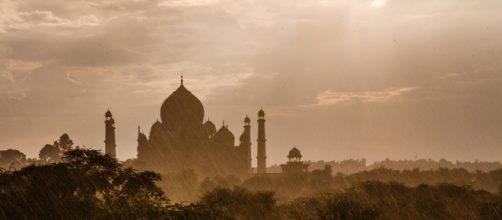While news channels worldwide have covered the havoc Hurricane Harvey has caused in Texas, another disaster is underway in South Asia. The heavy monsoons have brought life to a standstill in several areas in India, Nepal, and Bangladesh. With some regions still submerged in rain water, food scarcity and water-borne diseases continue to be the biggest threats to life. Rains have also damaged homes, farmlands and transport facilities.
Authorities in India fail to create fail-safe disaster management procedure
Indian states of Assam, Bihar, Odisha, West Bengal, and the prominent financial capital of India -- Mumbai -- have been washed away by the monsoon floods.
In Mumbai, transportation facilities have been fractured, and schools and offices closed down while individuals in many areas have been rambling along the sidewalks in waist-deep waters to find a safe haven. The spokesperson of the International Federation of Red Cross and Red Crescent Societies (IFRC) has confirmed that diarrhea, dengue fever, and Japanese encephalitis may be on the rise.
More than 30 million individuals have been reportedly affected by the monsoon’s downpour. Many have compared this year’s Mumbai monsoons with the 2005 monsoon deluge. Police officials, authorities, and news channels have continuously sent out alerts and warnings, asking people to stay put at home or abandon their drowning vehicles and walk.
Despite these warnings, people have headed out to work, causing numerous traffic bottlenecks and snarls.
The Narendra Modi government has promised millions of dollars worth of rescue packages, especially to help the farmers in the state of Bihar. Despite the monsoon deluge being a regular feature, the authorities haven’t been able to come up with a fail-safe disaster management program.
Poorest areas in Nepal and a third of Bangladesh severely affected
Considered one of the most severe floods in many years, the areas hit by monsoons in Nepal are some of the poorest areas. Most affected are poor farmers who depend on subsistence farming for survival. Due to the monsoons, their farmlands are submerged, their mud homes washed away and many of their loved ones swept away.
In many regions, elephants have been brought in to rescue people. Aid workers have also built makeshift rafts to paddle through flooded areas and rescue as many individuals as possible.
Bangladesh is primarily a low-lying and a high population density region; due to this a third of the land is under water. An IFRC spokesperson has confirmed that eight million residents have been affected, with the death toll rising to 140 and the number of homes destroyed reaching a staggering figure of 700,000. An aerial view of the affected regions shows cities that have turned into rivers with clusters of houses stuck in the middle.


